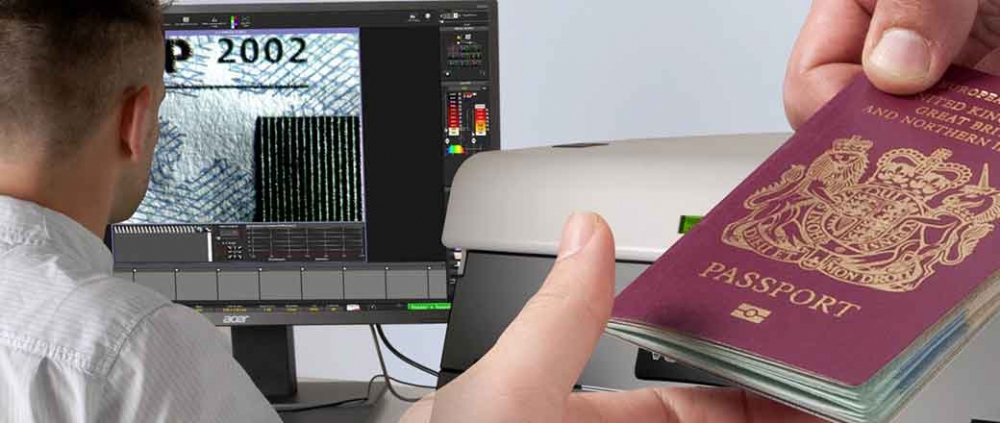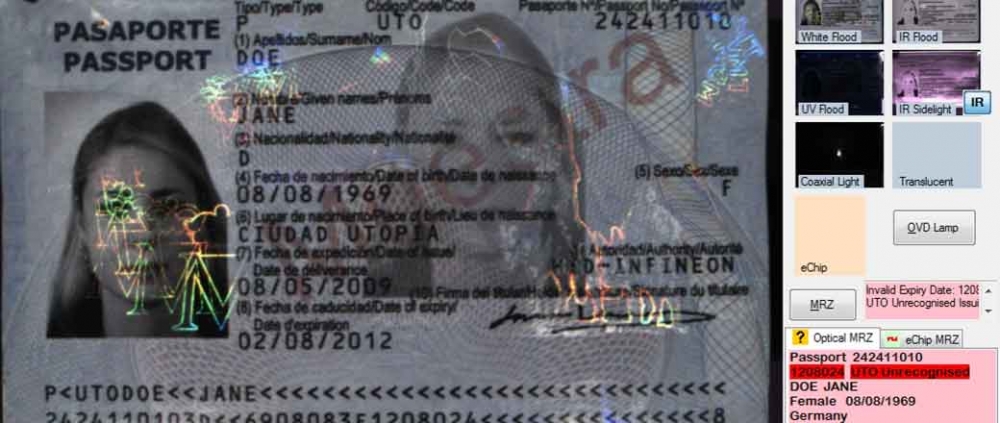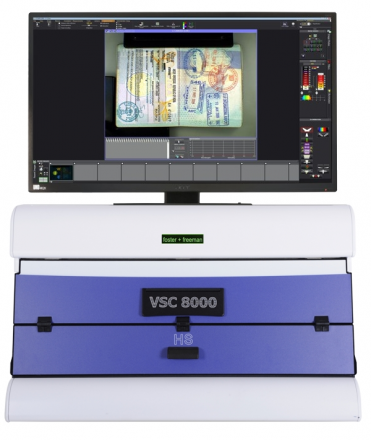A brief introduction
In daily use, handwriting is primarily used to record and disseminate information. What is of central importance is the content of the writing. The forensic handwriting examiner, however, is usually not interested in determining what a particular written text attempts to convery but, on the basis of the handwriting itself, is out to determine who wrote it. The emphasis is therefore not on the content but on the material from of the text. In comparative handwriting examinations, handwriting is regarded as a complex physical trace in which movement patterns typical ofthe writer can be distinguished, which can be used for purposes of identification. In most cases these traces are made up of ink marks on paper.
Where possible, and insofar as their Professional knowledge permits this, forensic handwriting examiners also pay attention to linguistic aspects such as spelling, grammar, syntactic stucture and wording. Forensic handwriting examiners, however, are not qualified to carry out a full linguistic text analysis. Nor do forensic handwriting examiners, unlike graphologists, deal with the relationship between writing and personality features.In other words,no comparison is made on the basis of derived character traits.
In comparative handwriting ex-amination tour phases can be distinguished:
- Analysis of the handwriting
- Comparison of the observed handwriting characteristics
- Assessment of the similarities and dissimilarities found
- Drawing of the conclusion
I.ANALYSIS OF THE HANDWRITING
The Method used by the NFI distinguishes the following categories of handwriting characteristics:
- General characteristics
- Surface lay-out characteristics
- Mikrocharacteristics.
Signatures are a special type of writing. In the examination of signatures attention is devoted to particular characteristics. Although they partly overlap whit the above-mentioned catogories, they will be discussed as a separate group.
I.1 General characteristics
These characteristics describe the overall pictorial appearance. This category includes:
- style of handwriting (cursive writing, block capital writing, etc.) size of the slope of the writing in relation to the (printed or imaginary) base line
- proportions of the graphic elements (e.g.size of upper and lower loops relative to the middel zone part of the letters)
- degree of connectivity
- pen pressure
The linguistic features mentioned in the introduction, such as spelling, punctuation, grammar and wording, are normally included in this category as well. Strictly speaking, however, these are not handwriting features.
I.2 Surface lay-out characteristics
These characteristics deseribe the placing of the writing in relation to a frame of reference. Examples of this are:
- width of left and right margins
- width of bottom and top margins
- distance between the lines (line spacing) and the angle writing (on plain paper)
- distance between words and word interruptions (spacing)
- placing of, for example, a signature in the box intended fort hat purpose
I.3 Mıcrocharacteristics
Although this may not be immediately clear, in virtually every handwriting one can distinguish a relatively large but nevertheless limited number of basic forms which together make up the different letters and numbers and the transitions between them. The shape of these recurring handwriting elements and the variation in the actual handwritin realissations of each of these elements constitute the most important basis for the distinction between different handwriting and, consequently, also the basis of comparati handwriting ezaminations. Examples of such forms are the individual numbers and letters, but also parts of them which various elements have in common (such as the bottom and top loops of letters) or frequently-occurring, connected letter combinations which may have a design specific to that combination (e.g.ch,st,tr and and). Of crucial importance in the comparison of these ‘building blocks’ of handwriting is the so-called curvature development of the writing line within these elements. Changes in curvature reflect the coordination of the writing movement during the writing process. The writing movement can be regarded as an interplay of submovements, each brought about by the muscles and joints participating in the writing movements. The excitation and inhibition of these submovements becomes visible in the writing in the so-called interaction points. The collective term microharacteristik is used for a series of successive interaction points. (For more information about this, see Hardy&Fagel,1995.)
The most prominent interaction points are those where there is a reversal in the direction of movement. Examples of such points are the top of loop letters, where the ascending movement curves into the descending movement, and the base, where the descending movement curves into the ascending movement. In the horizontal direction, these reversal points are located where a movement to the left
changes into a movement to the right, and vice versa. The curvature development in the various graphic elements of a handwriting forms the basis for the comparison of these elements. The curvature development is often also called ‘the sharpness of the (movement) transition’ or ‘the curve of the ascending and descending stroke’. Other handwriting experst sometimes use other expressions for the collective term ‘microcharacteristics ‘, such as ‘the detailed course of the writing movements’, ‘movement trajectory’, and ‘configuration of the interaction points’.
I.4 Norm deviation
The rarer the shape of a handwriting characteristics, for example, the construction of a certain letter, the more weight this characteristics will carry in the comparative examination. In this context, account must be taken of the population from which the person in question originates or may originate. What is a norm deviation by Dutch standards need not be so in the writing of persons taught to write in another country, partly because of the different copybook used.
I.5 Signature characteristics
In the field of handwriting comparison, signatures have a special place. On the one hand, they are trpically fairly short pieces of handwriting, and on the other, they belong to the most highly automated parts of a person’s writing repertoire. They can be built up of elements clearly recognisable as letters,but they may also consist of movement patterns not recognisable as letters. Occasionally, a person may use two or more basic forms as signa- tures. A difference in the overall pictorial representation of to two signatures does not, however, neces- sarily mean that these signatures are produced by different persons.
Signatures are subject to attempts at copying much more often than ordinary hand-written tekst. The more successful a forget is in reproducing the precise writing movements of a real signature, the less will his own handwriting characteristics be present in the final result, and the more difficult it will be to determine who produced the forgery. The most extreme from of signature copying occurs when a real signature is traced with the aidof, for example, carbon paper, a light box, etc.
The comparison of signatures takes place on the characteristics described above, insofar as these apply. Furthermore, the following charac-teristics relating to the special character of signaturesare of special importance.
I.5.1 Movement sequence
The sequence of writing movements in a signature may be so complex that a forger fails to notice much less copy them correctly. Accurate (microscopic) reconstruction will usually enable the document examiner to establish the correct sequence. A correct sequence in a complicated signature usually counts as a significant similarity and anincorrect sequence as a significant difference.
I.5.2 Line quality
The quality of the writing line in copied signatures may deviate from that in the genuine signatures. Examples of phenomena that impair line quality are:
- pen lifts and retouching in places where smooth flowing writing lines might be expected
- a hesitating, dispersed, shaky writing movement
- no gradations in writing pressure
I.5.3 Signs of practice, etc.
There may be traces in the signature or near the signature that indirectly point to forgery. More specifically, there may be signs of practice (double line formation, tracing, carbon paper residue, indentations lacking ink), signs of erasure and (in the case of photocopies) signs of pasting.
II COMPARISON OF THE OBSERVED HANDWRITING CHARACTERİSTİCS
A person’s handwriting always has a certain variation. This variation may be due to numerous factors, such as deliberate disguise, changes due to ageing or illness, changes due to medicinal or narcotic drugs, etc. But also two productions of the same letter writing one after the other or under exactly the same conditions are virtually always more or less different. In that case, the variation is sometimes referred to as natural variation. Such variation can make the comparison of handwriting a difficulttask. On the other hand, it can also be used as an extra means of identification, because the degree to which handwriting varies may be different from one writer to the next.
II.1 Range of variation
The concept ‘range of variation’ can be illustrated by means of a simple, measurable handwriting characteristics like word spacing. In any longer hand-written text, the spacing between two successive words can be measured at a number of places, making it possible to calculate the average value and spread. This establishes the variation range for the ‘word spacing’ characteristics. By applying this procedure in both the questioned and the known writing, it can be established in a statistically soundway that the questioned and the known handwriting correspond wiht respect to the ‘word spacing’ characteristics. In principle, this procedure can also be applied to more complex characteristics such as the curvature development in a single letter. However, in daily practice it would not be feasible to use this procedure because of its time-consuming nature. That is why a more efficient procedure, based on the concept of ‘visual equivalence’, is used. It has proven to be sufficiently reliable.
II.2 Visual equivalence
Suppose the examiner wants to compare a writing element, say the letter t. He first takes an inventory of a number of letters t in, for example, the questioned handwriting. He then examines whether there are variants in the inventoried series. Variants are defined as basically different constructions of the same graphicelement. The illustration below shows two variants of the letter t.
For each observed variant there will be one or more realisations. The examiner then determines whether there are visual equivalents for the realisations in the know wrinting, i.e. realisations that on visual inspection-whether or not carried out with optical instruments-cannot be distinguished from one another with respect to essential parts of the curvature development.
The closer the similarity of the various visual equivalents and the greater the complexity of the writing element involved, the better the quality of similarity will be. Professional skill is required to establish visual equivalence, particularly when handwriting is involved which shows strong variation. If visual equivalence is observed for more than one realisation of a certain variant, the conclusion may be drawn that the questioned and known writings are similar wiht respect to the variant involved. This is called a point of similarity.
A similar procedure is used to determine dissimilarities. If the realisations of a certain variant reveal a deviating curvature development, this constitutes a difference. The more reaisations there are that have the deviation, the more significant the dissimilarity will be. If one of the variants is missing, it may also point to a dissimilarity. What is decisive is the amount of handwriting whit the missing variant.
III WEIGHING OF THE SIMILARITIES AND/OR DISSIMILARITIES FOUND AND DRAWING ON THE CONCLUSION
III.1 Weighing
Before a conclusion can be drawn, the document examiner carefully weighs the number of similarities and/or dissimilarities found. This is done by means of a set of criteria, such as the number of similarities or dissimilarities, their rarity value.
The frequency of the observed combination of similarities and dissimilarities is of particular importance. In other words, the question how many other person in the population of writers under consideration would produce a comparable combination of similarities os dissimilarities. A random sample from a large population would provide a quantitative basis. However, the document examiner will normally base his judgement on his (many years’) professional experience. To yield a sufficiently rare combination of characteristics for identification, the handwriting under examination must contain a minimum number of analysable writing elements at the micro-level. This requirement would usually be met by a fully completed giro payment slip or Euro-cheque for example, or a letter containing two or three lines of text. If there is only a small amount of handwriting, or if the characteristics observed in it are of a more general nature, the document examiner will take this into account in drawing his conclusion.
III.2 Drawing the conclusion
III.2.1 Hand-written text
The results of the comparative handwriting examination are presented in the from of a cunclusion in which the examiner indicates to what extent he considers it likeyl that the questioned handwriting was produced by a certain person. To this end,he uses the following scale:
- whit a probability bordering on certainty
- highly probably
- probably
- probably not
- highly probably not
- whit a probability bordering on certainty not
The conclusion ‘with a probability bordering on certainty’ indicates the most extreme degree of similarity or dissimilarity that can be established between compared handwritings. The other gradations are derived from these extremes on the basis of the criteria referred to in Section III.1.
In addition to these probability gradations, the conclusions ‘possibly’ and ‘no opinion’ may be used. The conclusion ‘possibyl’ means that the findings of the examination are consistent with the proposition that the disputed material was produced by the suspect in question but that no combination of writing characteristics typical of the suspect was noted to warrant the conclusion ‘probable’ or stronger.
The conclusion ‘no opinion’ indicates that a comparative examination could not be carried out. This may be because the questioned material and/or the known material (1) did not meet the quality requirements (e.g. because only reproductions of the material were available) and/or (2) was not available in sufficient quantity (so that there was no firm basis for a comparison) and/or (3) was disguised in such a way that no individual characteristics could be established.
Statistical considerations play an important role in the comparison process. Working with visual equivalens (see Section II.2) is subject, for example, to statistical decision rules. The rareness of handwriting characteristics is a statistic that can be determined from random samples. This also holds true for the actual occurrence of different forms of handwriting disguise. Because of the probabilistic nature of the data on which the document examiner bases his conclusion, no use is made of certainty formulations. Ideally, the degree of probability can be expressed in figures, in percentages for example. However, the use of such figures in a comparative handwriting analysis would suggest a degree of accuracy that is not realistic, considering the inevitable subjective elements in the comparison process.
III.2.2 Signatures
In principle, there are three possibilities: the signature is genuine, it is an imitation, or it is fictitious. In the first case the signature is bona fide. In the last two cases the signature is mala fide, producedby a forger. An imitation or fictitiors signature, however, may also have been produced by the signatory. In that case, we speak of a pseudoimitation or pseudo-fictitious signature. Finally, the signatory may, wholly in good faith, use an alternative signature instead of the he normally uses. Depending on whether the desingof the questioned signature deviates from the pattern normally used by signatory and whether signs of copying are found, the following types of signature can therefore be distinguıshed:
Bona-fine signature
- Genuine signature
- does not deviate in terms of overall design;
- no signs of copying;
- produced by the signatory.
- Alternative signature
- deviates in terms of overall desing;
- no signs of copying;
- produced by the signatory.
Mala fide signature
- İmitation signature
- does not deviate in terms of overall design;
- signs of copying;
- produced by the forger.
- Pseudo-imitation signature
- does not deviate in terms of overall design;
- signs of copying;
- produced by the forger.
- Fictitious signature
- deviates in terms of overall design;
- no signs of copying;
- produced by the forger.
- Pseudo-fictitious signature
- deviates in terms of overall design;
- no signs of copying;
- produced by the signatory.
The probability scale used for hand-written textscan, in principle,be used for conclusions relating to the genuineness of signatures. Because of the special character of signatures (see SectionI.5),a measure of reserve must be exercised, particulary in the case of negative conclusions. In the case ofimitation and fictitious signatures in particular, it is often difficult to determine who produced them. For example, disputed signatures may deviate from the usual signatures of the person in question in terms of overall desing, while showing no signs of copying. These fall therefore in the category of fictitious or pseudo-fictitious signatures. In such a case, a comparative analysis may only allow the conclusion that the examination does ‘not support’ the proposition that the questioned signature was produced by the person in question. A similar situation may ocur in the case of signatures that strongly resemble the genuine known signatures, while showing unmistakable signs ofcopying. In this situation too, a comparavite analysis may merely allow the conclusion that the signature under examination is an imitation or pseudo-imitation, without there beging any indication who produced it.
III.3 Validation of conclusions
Comparative handwriting examinations are carried out at the NFI using a method accredited by the Raad van Accreditatie (‘Accreditation Board’, formerly STERLAB/STERIN/NKO) with associated quality assurance system. The validation of comparative handwriting conclusions is based, among other things, on the rulet hat each comparative handwriting examination must be checked by a second document examiner and that both examiners much reach a unanimous conclusion.
- For more information,refer to:
Ellen, D., The Scientific Examinationof Questioned Documents. Ellis Horwood Ltd.,Chichester, 1989.
Hardy, H.J.J.&Fagel, W.P.F.’Methodological Aspects of Handwriting Identification’, Journal of Forensic Document Examination, 1995, 8 p.33-69.
Hecker,M.R.,Forensische Handscriftenuntersuchung. Kriminalistik Verlag, Heidelberg, 1993.
Hilton, O.,ScientificExamination of Questioned Document, Elsevier North Holland, Newyork, 1982.
Huber,R.A.&Headrick,A.M., Handwriting Identification: Facts and Fundamentals.CRC Pres, Boca Raton/New York, 1999.
Michel, L., Gerichtliche Schriftvergleichung. W. De Gruyter, Berlin, 1982.
Kaynak: Netherlands Forensic Institute




